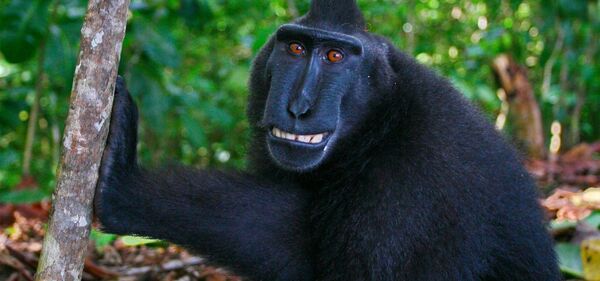Animal communication is as diverse as the animal kingdom itself, and one of the most fascinating sounds is "chatter." But which animals make chatter sounds, and why do they produce them? In this article, we’ll explore animals known for their chatter, the science behind these noises, and their significance in nature.
Chatter refers to a rapid series of repetitive sounds made by animals. These noises often serve as a form of communication, expressing emotions, warnings, or social interactions. From forests to urban areas, chatter sounds are everywhere, produced by a variety of creatures.

Primates, particularly monkeys, are some of the most well-known chatterers.
Purpose of Chatter: Monkeys use chatter to warn about predators, establish territory, or communicate within their groups.
Examples: Capuchins and squirrel monkeys are especially vocal, with chatter sounds forming an essential part of their communication.

If you've ever walked through a park and heard a sharp, repetitive noise, it’s likely a squirrel chattering.
Why Squirrels Chatter: These sounds are often warnings to other squirrels about potential threats.
Behavior: Squirrels chatter their teeth and make clicking sounds, which are part of their natural communication system.

Many birds are known for their chatter-like calls.
Birds That Chatter: Starlings, magpies, and parrots are among the most vocal species.
Purpose: Bird chatter often involves social bonding, courtship, or territorial disputes.

dolphins.html">Dolphins produce a range of sounds, including clicks and chatter-like noises.
Chatter in Water: dolphins.html">Dolphins use these sounds for echolocation and social communication, making their chatter essential for navigation and group interaction.
Certain mammals, such as chipmunks and prairie dogs, also produce chatter sounds, primarily as warnings or social signals.
Chatter is a key form of communication for animals living in social groups.
Monkeys and dolphins rely on chatter to strengthen social bonds.
Birds use chatter to synchronize activities within flocks.
Chatter can indicate danger.
Squirrels and prairie dogs use loud, repetitive chatter to alert their groups about predators.
These sounds are quick and sharp to grab attention.
In some species, chatter plays a role in mating rituals.
Birds often chatter to attract mates or establish dominance.
Animals like dolphins use chatter for echolocation and maintaining group cohesion in murky waters.
In dense forests, monkey and bird chatter is a common soundscape.
Example: Tropical jungles are filled with the chatter of parrots and primates.
Even in cities, animal chatter is prevalent.
Squirrels, sparrows, and starlings are common urban chatterers.
Some animals, like certain nocturnal birds or rodents, chatter at night.
This chatter often serves as a way to navigate or warn about nighttime predators.
Common among birds and small mammals, these sounds travel quickly and are easy to detect.
Larger animals, like dolphins, produce lower-frequency chatter that carries well underwater.
Squirrels and monkeys often produce rapid chatter, which conveys urgency.
While chirping is common among birds, chatter involves quicker, repetitive sounds that can last longer.
Chatter likely evolved as an adaptive advantage for survival, helping animals warn of danger or maintain group cohesion.
Scientists use advanced equipment to study animal chatter, revealing its complexities and meanings.
Studies show that chatter helps strengthen relationships among social animals like monkeys and dolphins.
Monkeys, squirrels, birds like starlings, and dolphins are all known for making chatter sounds.
Animals chatter for communication, warning signals, mating, and navigation.
Yes, some nocturnal animals, like owls or certain rodents, chatter during nighttime activities.
Chatter is typically a rapid, repetitive noise, whereas other sounds, like chirping or roaring, may vary in pace and tone.
Dolphins are the primary example, using chatter-like clicks for navigation and hunting underwater.
Animal chatter is a fascinating and essential part of the natural world. From the forests filled with monkey calls to urban parks where squirrels chatter away, these sounds are vital for survival and communication. By understanding the animals that chatter, the reasons behind these noises, and their role in ecosystems, we gain a deeper appreciation for the incredible diversity of life on Earth.
So the next time you hear a chattering sound, take a moment to appreciate the complex language of the animal kingdom.
animal tags: Dolphins
We created this article in conjunction with AI technology, then made sure it was fact-checked and edited by a Animals Top editor.